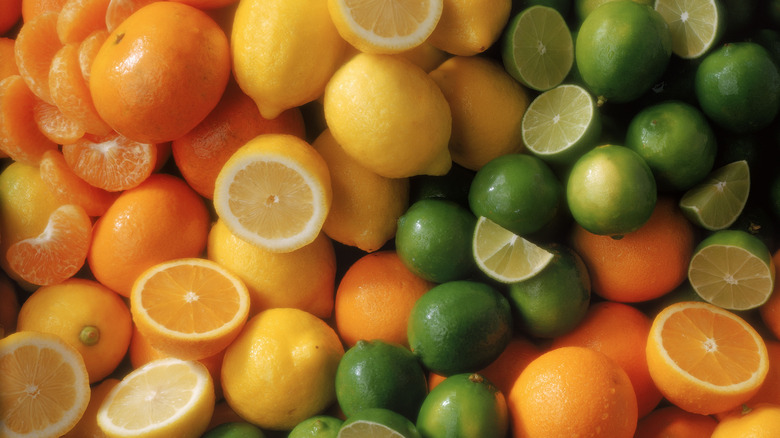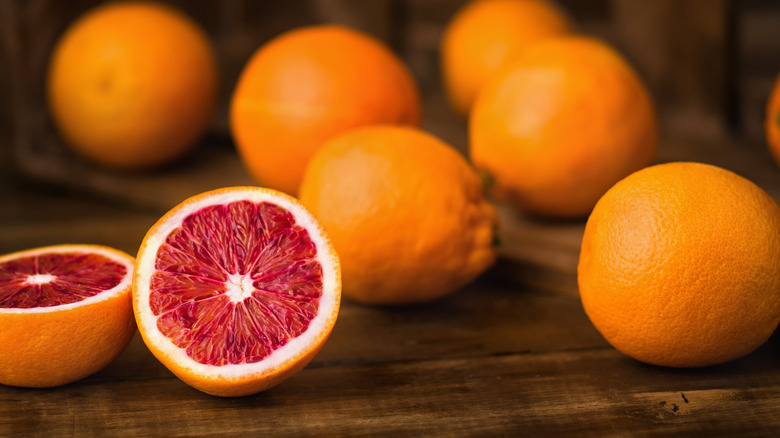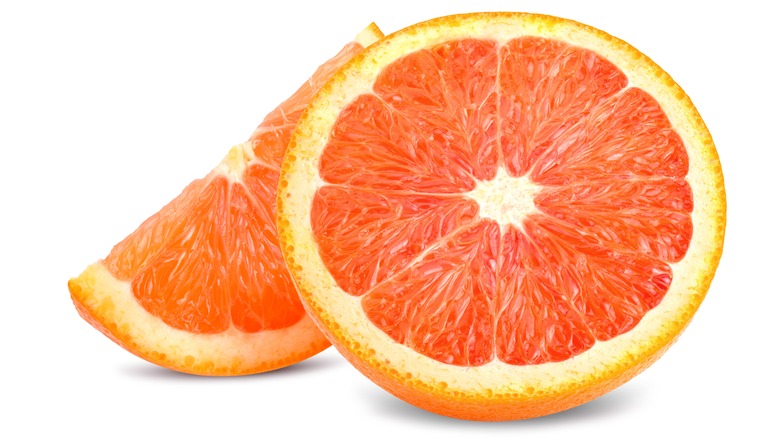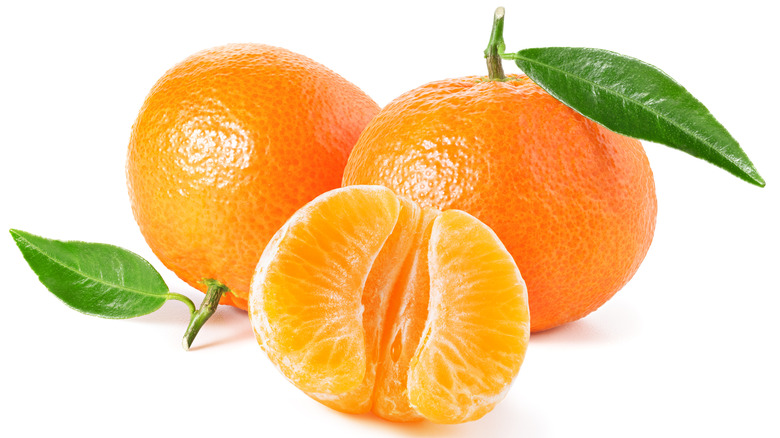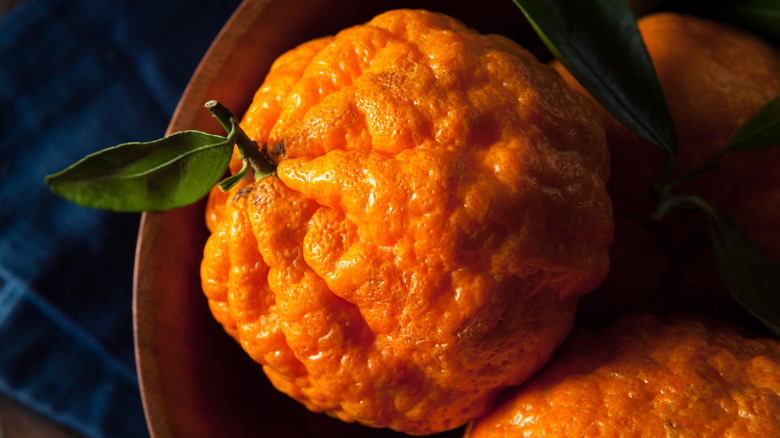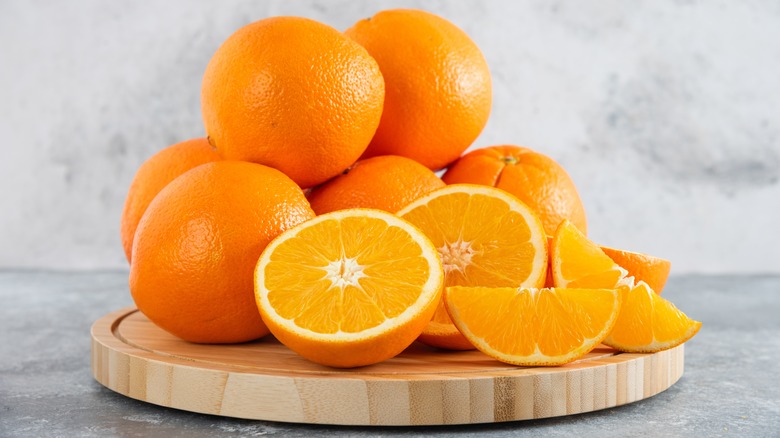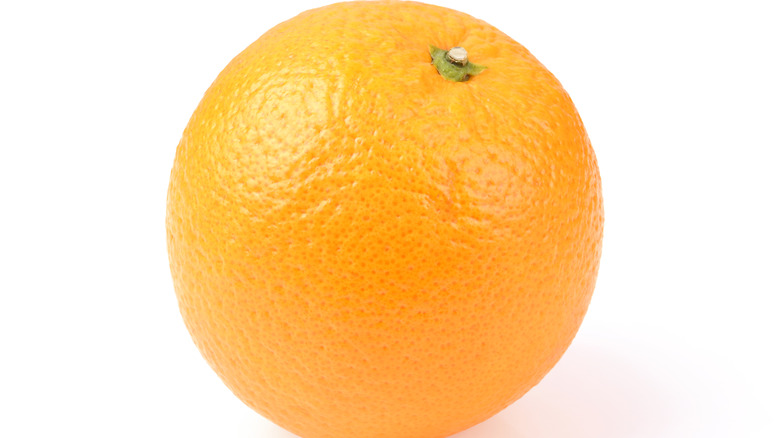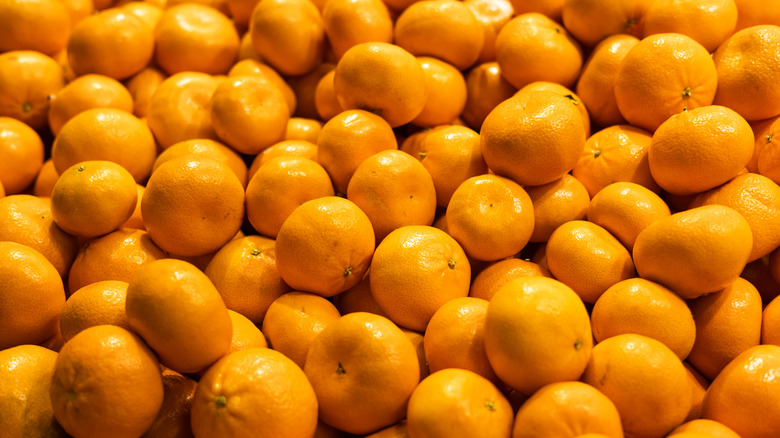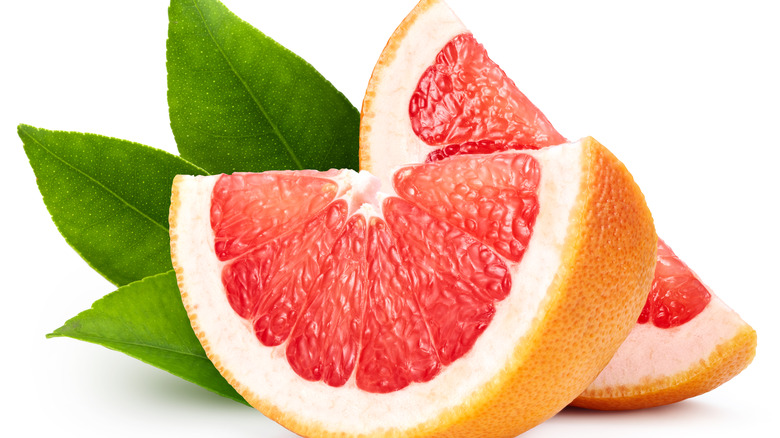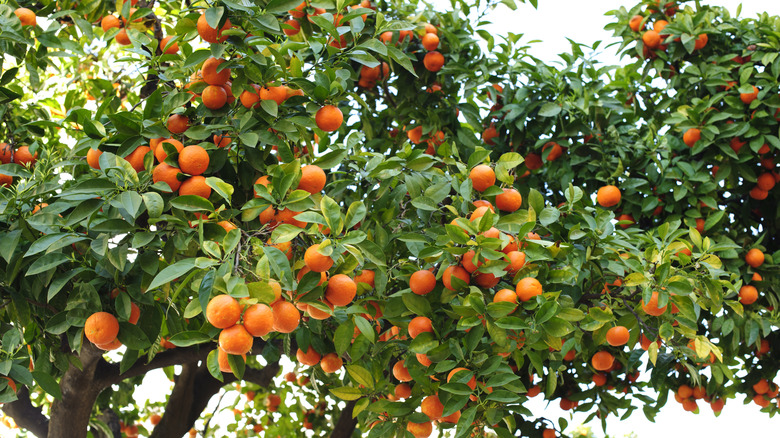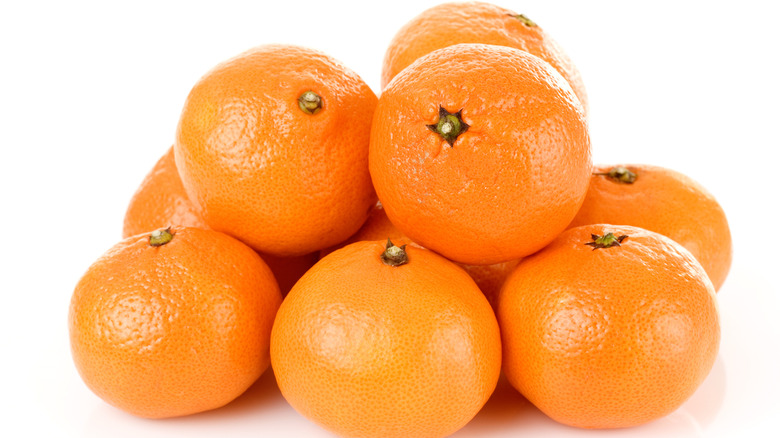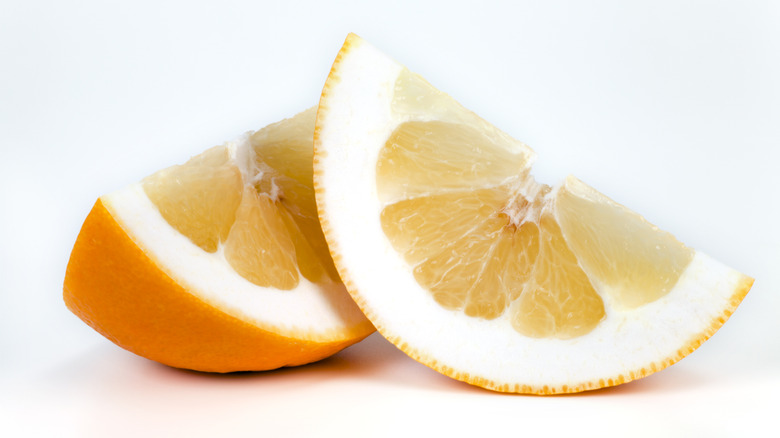Know These 12 Citrus Varieties And When They Are In Season
When we think about the transition from winter to spring, a time when the chafing March winds start to concede their fury and sunshine begins to stick around, we think about citrus. It also might be all this talk about spring training, the Grapefruit League, and all. Head to your local grocery store, particularly in late winter, and you will find an abundance of tangerines, grapefruits, clementines, and oranges. We hit the well-stocked Fairway in New York's Chelsea neighborhood and bought everything in sight. Here's what we found out about each of these varieties.
Blood orange
Crimson flesh bursting with staining juice is the trademark of this popular citrus. There are three types — Moro, Tarocco, and Sanguinello — with a flavor that ranges from tart to semi-sweet depending on the type and season. Because of its unique color, the blood orange is often incorporated into recipes, from cocktails to preserves. It's also the inspiration for a pretty stellar London-based singer-songwriter.
In season: December-April
Cara cara
How many menus have we seen as of late featuring the cara cara? Many. Chefs love this pink-fleshed navel orange for its sweet juice accented with an underlying zip (though with lower acidity than other navel oranges).
In season: December-April
Clementine
The clementine is a cross between a mandarin and sweet orange, simple to peel, and almost always seedless (as opposed to the seedy tangerine). The juice is sweeter than many oranges and there is far less acid, making it one of the most popular snacking citrus fruits available. Unlike much of the citrus listed here, the clementine season is very short and typically peaks around the holidays, imparting the nickname "Christmas orange."
In season: November-January
Golden Nugget Mandarin
Smaller than the Murcott and classic Mandarin, but bursting with juice and sweetness. There are no seeds.
In season: March-June
Juice/Sweet orange
This is the real workhorse citrus. The Valencia or Hamlin is not always pretty (battered, faded by the sun, scuffed by poor handling), but the flesh is what's important. When squeezed and pressed, out flows the breakfast staple.
In season: January-November
Heirloom navel
As the name suggests, this is the navel that made the citrus industry an industry in California. And unlike the standard navel orange, which you will find in grocery stores year-round, the heirloom is available only in the winter and early spring months.
In season: December-March
Murcott Mandarin
A cross between a tangerine and a sweet orange. The rind is thin and peels easily. "The flavor is very rich and sprightly," notes the UC-Riverside Citrus Variety collection. It is sometimes called the honey tangerine.
In season: January-April
Ruby Red grapefruit
This grapefruit — closely associated with the Star Ruby and Rio Red — is mostly grown in Texas as is sweeter and juicer than other types.
In season: October-April
Seville sour orange
This variety is sometimes called the bitter orange and is commonly used in the production of marmalade. The Seville is tart and grown throughout the Mediterranean. It's also the key ingredient in the orange-flavored liqueur Triple Sec.
In season: December-April
Tangerine
As mentioned, the tangerine is a close cousin to the clementine. They're small, sweet, and very snackable (which is why you likely found these packed in your lunch as a child). The big difference is sweetness — the tangerine has less — and seeds. The tangerine has more seeds. Many more.
In season: October-January
White grapefruit
It wasn't until 1948 when scientists classified the grapefruit as a cross between the pomelo (long native of Southeast Asia) and the orange — though the first groves were planted near Tampa in 1823. This is the most common grapefruit found in grocery stores and is good for juicing or eating with one of those cool spoons.
In season: April-June

